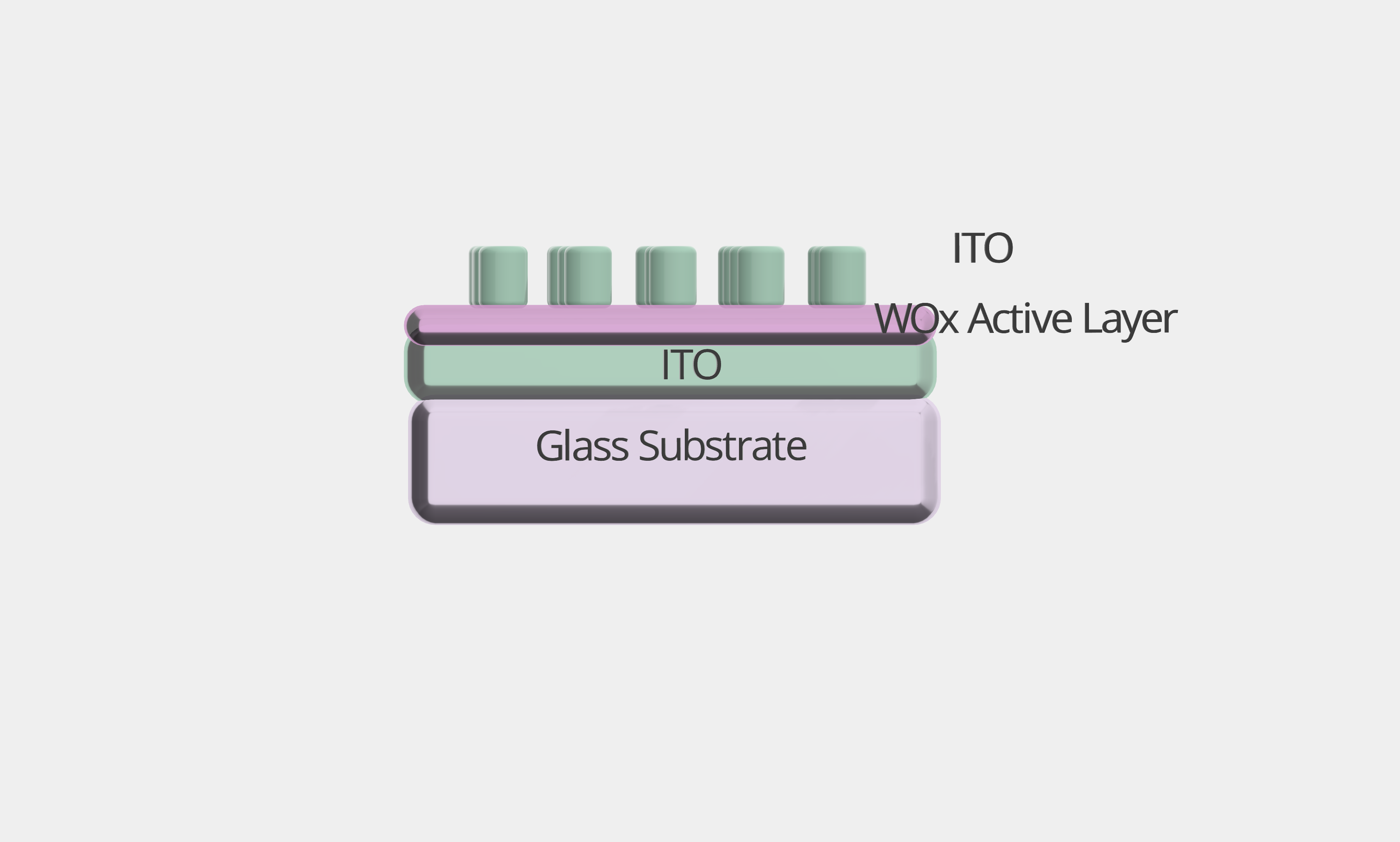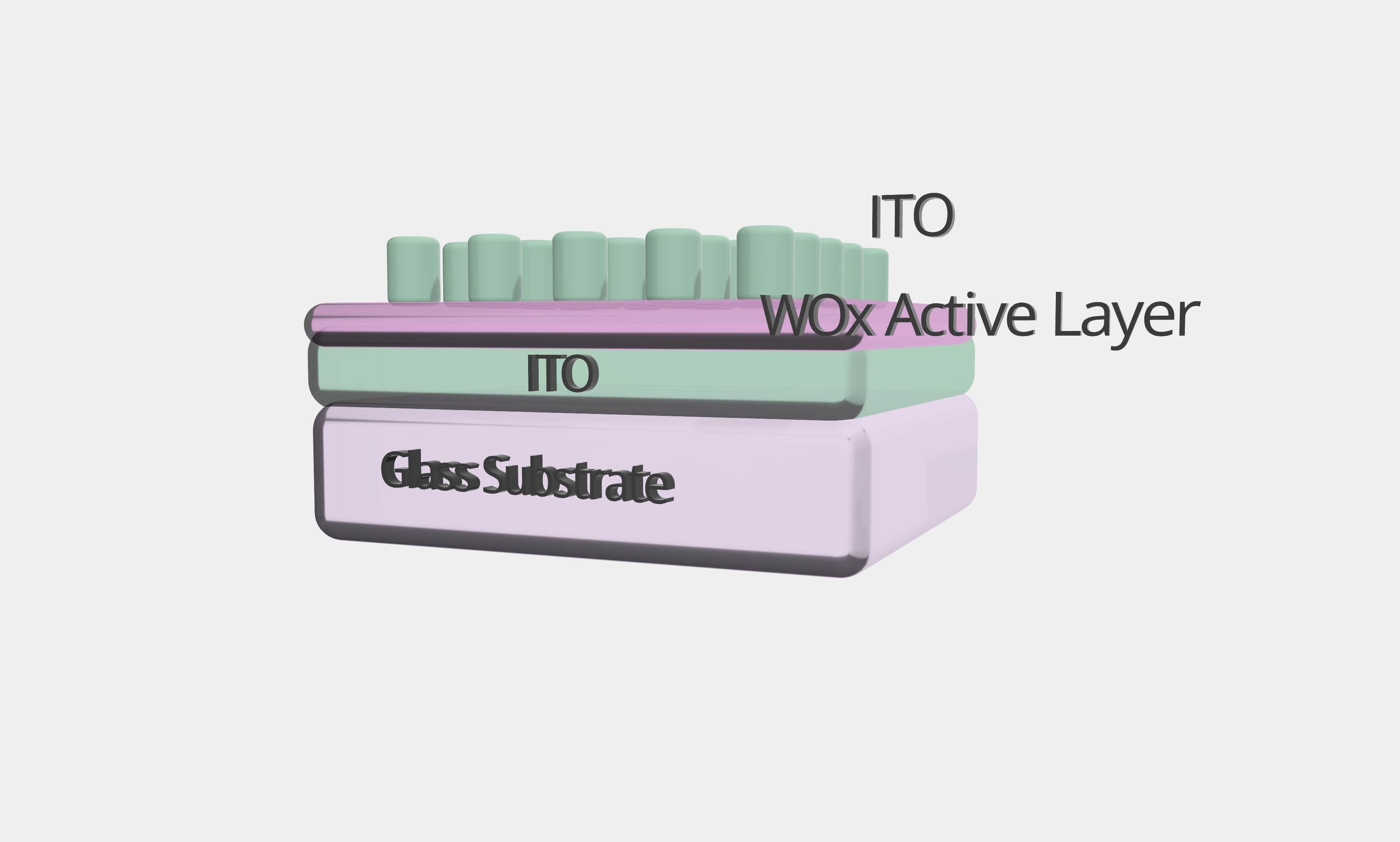This project is research based. We seek to fabricate memristors in a non-clean room environment using a physical vapor deposition machine. Further, we seek to access Tungsten Oxide (WOx) as an active layer comprehensively by looking at area effect and active layer thickness effect. We will evaluate the Device to Device variation as well as the Cycle to Cycle variation in each feature size of our devices as well as assess their endurance and retention ability. Finally, we wish to model these devices both numerically, using the known types of dielectic conduction. We seek to create plots of the electric field, voltage, and temperature versus current density in order to predict mechanisms. This will allow us to qualitatively charachterize the switching mechanism.


The above shows the 3D Models of our ITO WOx Edged device
Dr. Chen
Dr. Ying-Chen Chen received the Ph.D. degree in the Department of Electrical and Computer Engineering (ECE) at The University of Texas at Austin in 2019. She is focused on the emerging nano memory devices for the future of computing using emerging physics and materials. This has included research in low power self-selected crossbar resistive switching memory for high storage class memory applications, nanoelectronics fabrication, electrical characterization and physical modeling, next-generation memory devices for new computing architecture, and the brain-inspired human-machine interface by flexible materials integration
Link to Dr. Chen's SDRL Lab PageAs this is an emerging type of memory device research is vital in determining effectiveness of materials and improving current design and application. As advances in computing continue to develop the need for fast and reliable memory develops as well, RRAM stands to be the answer to the developing need for machine learning. Therefore, RRAM must be efficient, fast, and reliable.As we are working in colaboration with the SDRL at NAU One of the primary research topics of this lab is in the fabrication and characterization of RRAM devices and its use in brain inspired computing. Our capstone project will contribute to the mission of this lab by providing a comprehensive look at the complete process, from fabrication to characterization, of WOx RRAM.

This project is research-based and therefore, we must follow a research flow to accurately record our results and reduce bias to produce optimal results. Our process flow consists of initial research into materials and fabrication methods. Once we select our materials and methods we fabricate the associated devices. As we get each fabricated device we begin our Low Endurance Testing, this is to get a measure of yield and functionality of fabricated devices. As the data comes in we evaluate the effectiveness of the fabrication method and if need be we go back to the design of the devices and start this process again. Once we get devices that pass the Low Endurance Testing we can move on to the next round of testing. Simultaneously we seek to find novel applications of our devices and that process begins when the Low Endurance Testing is completed as well. The final step of the flow is to characterize the devices. Once this process is completed we shall seek to publish and present these findings.
